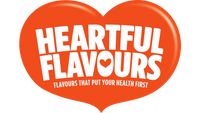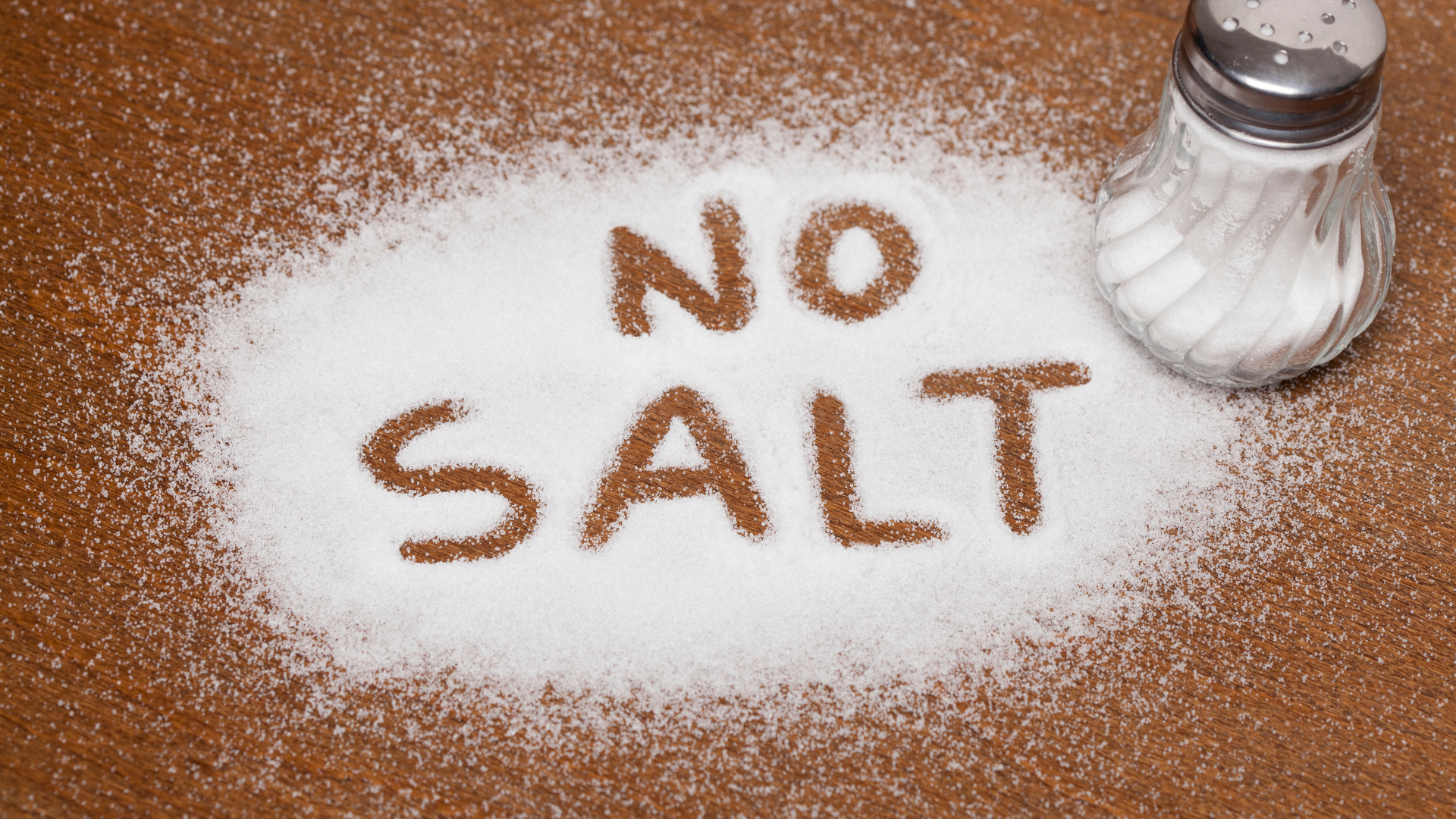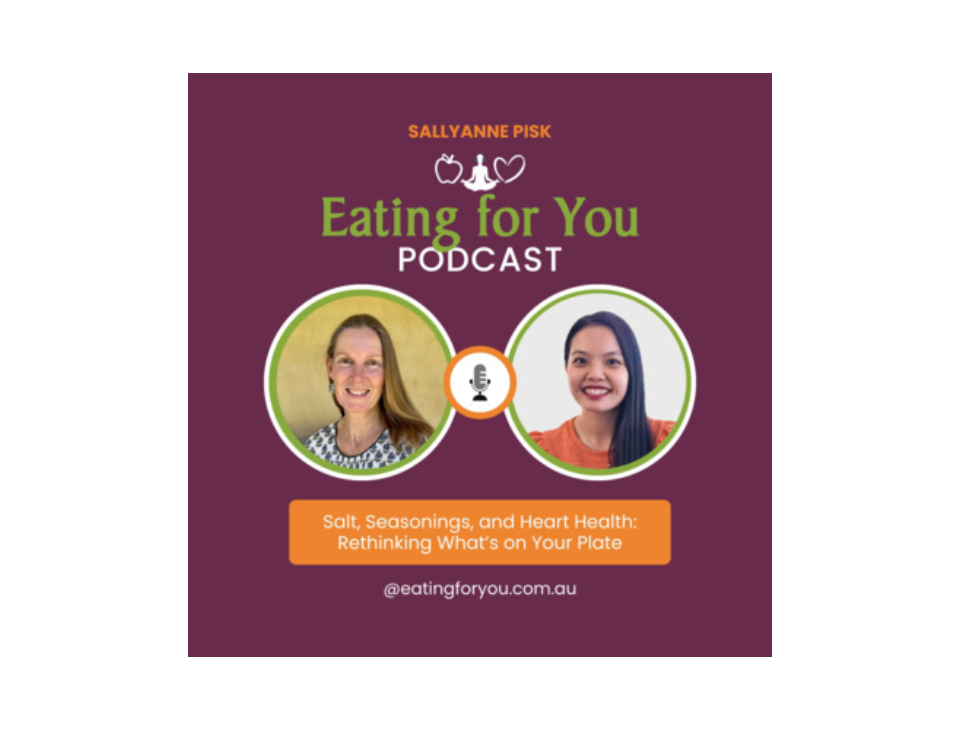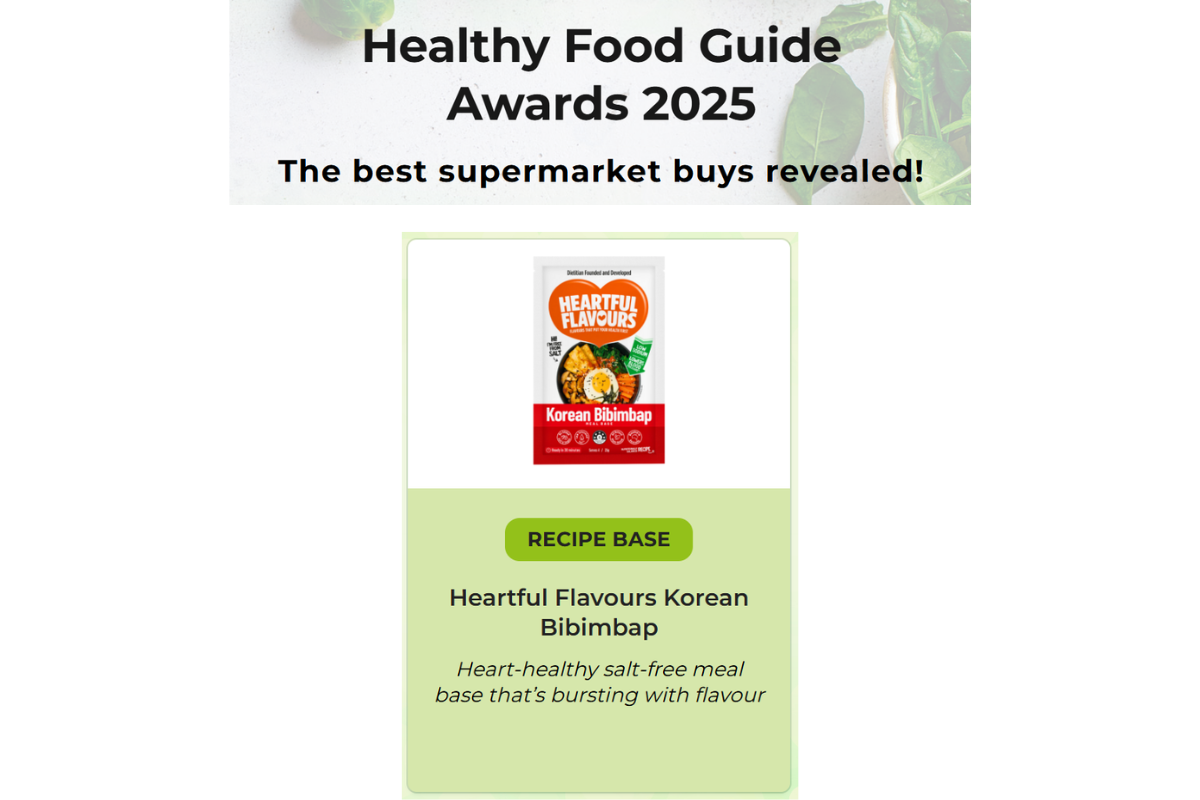Sodium Requirements and 5 Ways to Reduce Sodium Intake
We only require a relatively small amount of sodium for our body to function (1). Sodium is naturally present in many foods so we do not require more added in food products. However, astoundingly the average adult consumes much more sodium than necessary at almost double the recommended upper limit to reduce risks of chronic disease (2,3). 75% of sodium in diet comes from salt added in processed food products.
Sodium intake
|
Average (Australia) |
3600mg |
|
Average (Globally) |
4310mg |
|
Recommended upper limit to reduce risks of chronic disease |
<1500-2000mg adults & children 9-17yo (<1000mg 1-3yo, <1400mg 4-8yo) |
|
Adequate intake |
460-920mg adults & children 14-17yo (200-400mg 1-3yo, 300-600mg 4-8yo, 400-800mg 9-13yo) |
1 teaspoon of salt approximately 5 grams = 2000mg of sodium
i.e. 1 gram salt = 400mg of sodium
Excess sodium intake is linked with increased risks of (4,5,6):
- high blood pressure (hypertension) which is a major risk factor for heart disease including heart failure
- kidney disease
- stroke
- stomach cancer
- osteoporosis
- fluid retention (oedema)
Here are some practical tips to reduce sodium intake:
- Read Food Labels: Pay attention to the sodium content on food labels such as in processed foods, sauces and condiments. Choose products with no added salt or low in sodium. Low sodium is <120mg per 100g.
- Cook at Home: Preparing meals at home gives you control over the ingredients. Use herbs and spices to flavour your dishes instead of salt and remove the saltshaker from the table.
- Eat More Fresh Foods: Vegetables, fruits, wholegrains, legumes, unsalted nuts and seeds, and lean protein sources are naturally low in sodium.
- Limit Processed Foods: Processed and fast foods often contain high amounts of sodium.
- Choose Low-Sodium Alternatives when dining out: Ask for low-sodium options, request that your meal be prepared with less salt and ask for sauces or dressings to be served on the side.
Excessive sodium intake can lead to high blood pressure, a significant risk factor for heart diseases. By making healthier food choices, and adopting a balanced diet, you can help maintain a healthy blood pressure level. Consult with a healthcare professional for personalised guidance and advice on managing your blood pressure through diet and lifestyle changes.
According to the World Health Organisation (2) "Reducing sodium intake is one of the most cost-effective measures to improve health and reduce the burden of non-communicable diseases: for every US$ 1 invested in scaling up sodium reduction interventions, there will be a return of at least US$ 12."
Heartful Flavours Meal Bases are low in sodium, contains herbs and spices, and comes with nutritionally balanced recipes. Try Heartful Flavours Meal Bases today! Your heart and taste buds will thank you!
Sources:
- National Health and Medical Research Council. Australian and New Zealand Nutrient Reference Values for Sodium (2017). NHMRC.
- Dong OM. Excessive dietary sodium intake and elevated blood pressure: a review of current prevention and management strategies and the emerging role of pharmaconutrigenetics. BMJ Nutr Prev Health. 2018;1(1):7-16. doi:10.1136/bmjnph-2018-000004. PMID: 33235949.
- World Health Organisation. Sodium reduction (2023). WHO.
- Wang YJ, Yeh TL, Shih MC, Tu YK, Chien KL. Dietary Sodium Intake and Risk of Cardiovascular Disease: A Systematic Review and Dose-Response Meta-Analysis. Nutrients. 2020;12(10):2934. doi:10.3390/nu12102934. PMID: 32992705.
- Trieu K, Coyle DH, Rosewarne E, et al. Estimated Dietary and Health Impact of the World Health Organization's Global Sodium Benchmarks on Packaged Foods in Australia: a Modeling Study. Hypertension. 2023;80(3):541-549. doi:10.1161/HYPERTENSIONAHA.122.20105. PMID: 36625256.
- Filippini T, Malavolti M, Whelton PK, Naska A, Orsini N, Vinceti M. Blood Pressure Effects of Sodium Reduction: Dose-Response Meta-Analysis of Experimental Studies. Circulation. 2021;143(16):1542-1567. PMID: 33586450 doi:10.1161/CIRCULATIONAHA.120.050371.



